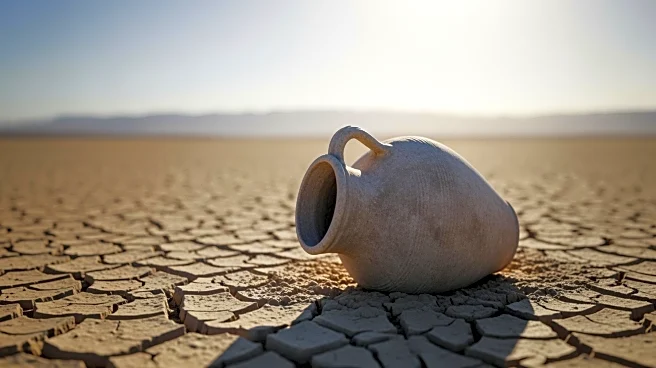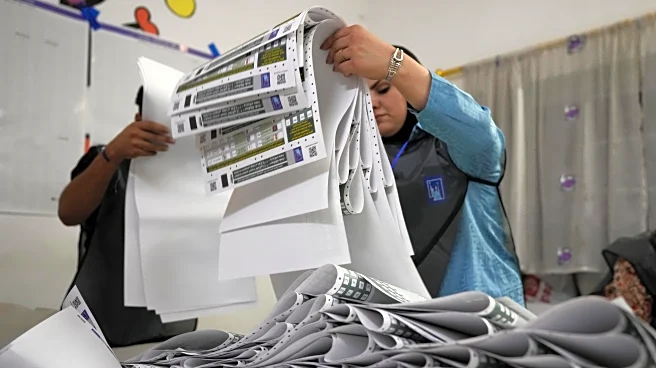What's Happening?
Iran is experiencing its most severe water crisis in decades, exacerbated by an unprecedented drought, mismanaged resources, and aging infrastructure. Authorities in Tehran have warned that rolling water restrictions
could escalate to a full evacuation if conditions do not improve, increasing political pressure on the government. The crisis has led to public anger and protests, with residents struggling to access water. The situation is compounded by shrinking lakes and depleted dams, which undermine agriculture, industry, and electricity production, worsening inflation and unemployment.
Why It's Important?
The water scarcity in Iran is a critical test of the government's ability to govern, as it threatens to transform local grievances into nationwide political pressure. The crisis undermines essential services and has become a potent symbol of political failure, exacerbated by years of sanctions, corruption, and mismanagement. The situation poses a risk to Iran's nuclear program, as shortages in water and electricity could disrupt operations. The government's internal divisions over addressing the crisis further complicate efforts to implement structural reforms, leaving short-term measures as the primary tools for managing the crisis.
What's Next?
Iran's water crisis is poised to deepen unless immediate and long-term solutions are implemented. Infrastructure reforms and better resource management are critical, but the country also depends on rainfall to replenish reservoirs and rivers. Without relief from the drought, shortages will intensify, further straining cities, rural communities, and critical industries, including the nuclear sector. Emerging protests may grow as daily hardships mount and public frustration increases, challenging the government's ability to maintain domestic stability and international influence.
Beyond the Headlines
The crisis highlights deeper systemic issues within Iran, including decades of crippling sanctions, widespread corruption, and resource mismanagement. These challenges make it difficult for policymakers to implement necessary reforms, leaving the country vulnerable to environmental and political instability. The situation underscores the need for comprehensive policy changes to address both immediate and long-term challenges.













